Repeatedly asking, “What?” during conversations isn’t the only side effect of untreated hearing loss. Studies show untreated hearing loss is linked to depression, decreased social engagement, and cognitive decline. (1, 2) Fortunately, the introduction of over-the-counter hearing aids (OTC) by the Food and Drug Administration (FDA) has helped make hearing aids more affordable and accessible. (3)
“Hearing loss is a life-changing condition, affecting 466 million people worldwide, 34 million of them being children, “ says Dr. Aneesha Dhargalkar, MD. (4) “In addition to being unable to hear, hearing loss can have devastating effects on physical and mental health. For example, individuals with hearing loss tend to experience increased issues in balance and ambulation. (5) Also, the educational, professional, and financial impacts of hearing loss cannot be overstated. For all these reasons, hearing aids can lead to a significant positive transformation in an individual’s life.”
OTC hearing aids treat mild to moderate hearing loss. Unlike prescription hearing aids, you can purchase them online and at major retail pharmacies or stores without a prescription. Go Hearing is an online hearing aid retailer that offers two OTC hearing aids: Go Ultra and Go Prime. Our team tested both, naming Go Ultra one of the best affordable hearing aids available today.
Our favorite Go Hearing hearing aids
Go Ultra hearing aids are our top pick and one of the best OTC hearing aids due to their multiple sound settings, Bluetooth streaming capabilities, noise and wind reduction, and discreet, comfortable behind-the-ear (BTE) design. Our testers were impressed with the devices’ comfortable fit, easy setup, and overall sound quality at $499 per pair.
Our picks for the best Go Hearing hearing aids
Compare Go Hearing hearing aids
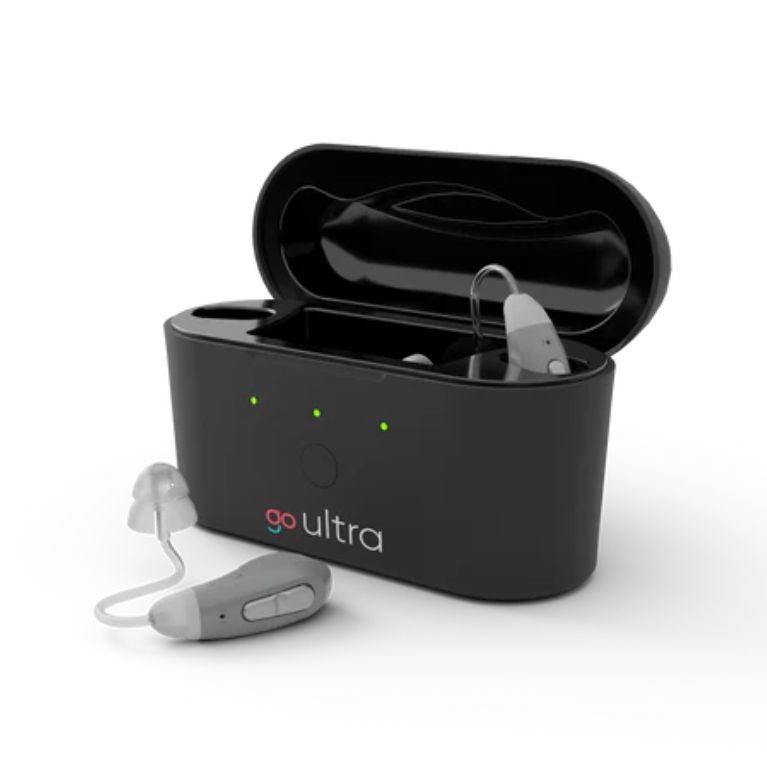
|
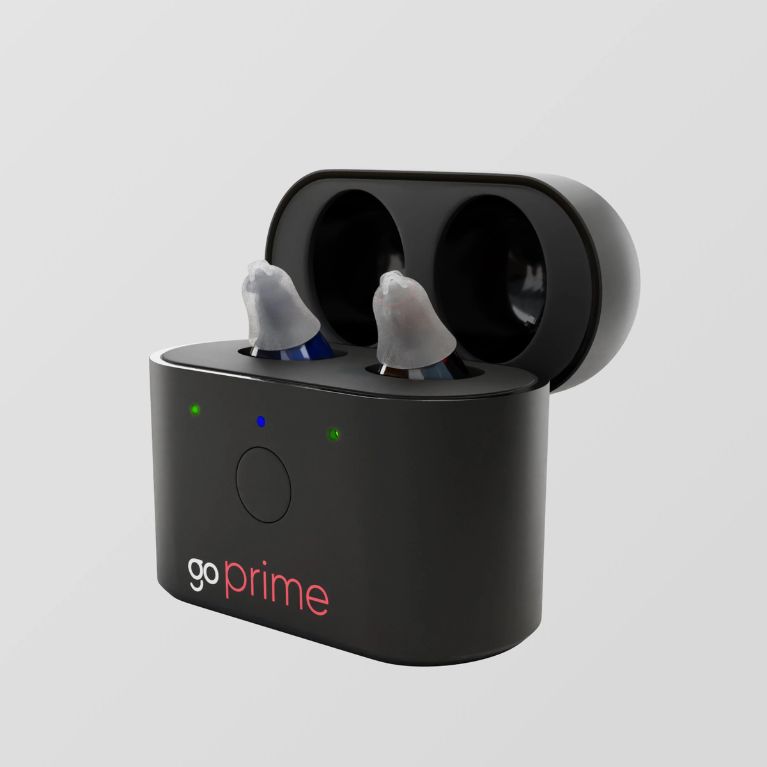
|
|
| Go Hearing Go Ultra | Go Hearing Go Prime | |
| Rating | ||
| Price | $499 | $299 |
| Type (OTC or prescription) | OTC | OTC |
| Style | Behind-the-ear (BTE) | In-the-ear (ITE) |
| Battery type | Rechargeable | Rechargeable |
| Battery life | Up to 20 hours | No |
| Bluetooth | Yes | Black |


Key product features
What you should know
Go Hearing Go Ultra are over-the-counter hearing aids you can purchase directly from the brand or at major retailers like CVS, Walmart, and Amazon. The hearing aids have four preset modes, allowing you to find the best setting for your needs and environment. They also have wind and noise reduction, as well as Bluetooth streaming for audio, music, and phone calls.
- Our testers found the behind-the-ear (BTE) style discreet, barely noticeable, comfortable, and easy to set up and navigate.
- Go Ultra hearing aids are $499 per pair and include a 45-day trial period and a one-year manufacturer’s warranty.
- We recommend Go Ultra for people with mild to moderate hearing loss looking for an affordable hearing aid with some advanced features, Bluetooth streaming, and rechargeable batteries.
- Batteries last up to 20 hours on a single charge, but constant Bluetooth streaming can reduce this to eight hours.
- There’s no app, so you control all sound and volume settings with the switches on the hearing aids.
Go Hearing Go Ultra hearing aids overview
Go Ultra is Go Hearing’s newest OTC hearing aid. Our testers thought the gray, behind-the-ear (BTE) hearing aids were discreet and barely noticeable. (6) They have 10 volume levels, four preprogrammed settings, noise reduction, and Bluetooth streaming capabilities.
Overall, our testers think the Go Ultra hearing aids are a good product for the low cost.
Go Ultra unboxing experience
Our testers found Go Ultra hearing aids easy to set up and use, thanks to the detailed user manual and how-to videos. We like that the box includes a large card labeled “Need assistance?” with contact information for customer service—that way, you don’t have to search for the best phone number to call if you have any questions or issues.
The user manual also has a section that breaks down all the equipment in the box, with helpful images and labels to help you familiarize yourself with your new hearing aids and equipment.
Our hearing aids included:
- Six open domes in small, medium, and large sizes (two per size)
- Six closed domes in small, medium, and large sizes (two per size)
- An ear-measuring tool to help with fitting the devices
- Six slim tubes
- Charging case, cable, power adapter
- A cleaning brush and two cleaning wires
Setting up and wearing Go Ultra hearing aids
Overall, setting up the hearing aids was simple. Our tester’s only issue was removing the slim tube to clean it. Hearing aid tubes enable sound to be transferred into the ear canal from the body of the hearing aid and sit discreetly behind the ear. They had to forcefully pull the tube off, which may be difficult for someone with dexterity issues. We also thought it was slightly confusing that the manual calls the switches on the back of the hearing aid “A” and “B,” but the switches have “+/-” symbol on one and an “M” on the other.
“The retention wire tickles a bit, but the wire can be cut shorter for a more comfortable fit. This wire prevents the dome from moving out of the ear canal.”
Related post: How do hearing aids work?
Our tester thought the hearing aids were comfortable while wearing glasses. The devices remained in their ears throughout the testing, even when they engaged in more strenuous activities such as dancing and jogging.
Testing Bluetooth capabilities
The best Bluetooth hearing aids allow users to stream phone calls, music, and audio directly through their hearing aids. Our testers quickly connected the Go Ultra hearing aids to their phones to test phone calls and music streaming. The tester sitting next to our Go Ultra tester couldn’t hear the music streaming through the other tester’s hearing aids.
There are a few downsides to Go Ultra’s Bluetooth capabilities. Constant Bluetooth streaming gives the hearing aids a 2.5-to-3-hour battery life, as opposed to the 8-hour battery life while not connected to Bluetooth. We also realized streaming isn’t compatible with computers, which may be frustrating for users who want to switch between devices or work primarily on a laptop.
Charging our Go Ultra hearing aids
The charging case is compact and has strong magnetic ports that the hearing aids can easily snap into. We like the verbal cue to indicate the battery is low; the devices play a voice prompt stating, “Please charge” when about 30 minutes of battery life is left. This prompt repeats every three minutes until the battery dies.
A blue light at the front of the hearing aid case shows the devices are charging. This light turns green when your hearing aids are fully charged. It takes up to three hours for Go Ultra hearing aids to fully charge. They should last up to 20 hours on a single charge, but Bluetooth streaming shortens the battery life.
Go Ultra hearing aid features
Unfortunately, Go Hearing doesn’t offer an app. We had to change programming modes and volume settings with the buttons on our hearing aids.
There are four preset hearing programs and 10 volume settings, allowing you to customize your device to your hearing and environment. We like that you don’t have to constantly reset your hearing aid presets—the memory recall feature resets the device to its last used settings after it’s turned back on.
What customers are saying
Go Hearing’s Go Ultra hearing aids have a 3.1- out of 5-star rating on Amazon. Many reviewers are happy with the quality of the Bluetooth streaming and the ability to connect to multiple devices. Multiple reviews mention that the hearing aids are discreet, comfortable, and easy to use.
Customers praise the OTC hearing aid’s quality, especially for the price.
“They did a great job of picking up sounds from all directions – I could hear the TV easily, my dogs snoring at my feet, my fingers typing on the keyboard, anything I was doing with my hands that caused noise. I was able to hear my wife talking to me without having to ask her to repeat things. They even provided a noticeable level of noise reduction. When I work, I sit about 10 feet from a window air conditioner unit. While I could still hear it, the ambient noise level did seem to be lower.”
”Customer,” Amazon
A few reviewers were skeptical of the volume control and adjustments on the devices themselves, but they found it easy to adjust with the control switches.
Multiple negative reviews complained about the short battery life, with some users reporting the battery lasted only four to six hours. Other reviews mentioned low-quality music streaming, whistling noises, and difficulty adjusting the hearing settings with no app.
One reviewer, John C., said, “The device is not app-controlled, which makes it difficult to adjust. The quality of sound is very low, like listening through a tin can, as the earpiece is a tube and not an actual sound drive.”
Go Ultra hearing aids have a 4- out of 5-star rating on CVS based on 26 reviews. Overall, reviewers were pleased with the sound quality, Bluetooth functionality, and affordable price.
“I purchased these instead of going through my insurance. The price was lower than my copayment. They are fairly simple to use. I haven’t tried all the settings yet, but my issue was hearing conversations. I say ‘What?’ a lot less now. There are 10 volume settings […] One reason I chose these was the gray color; they are behind the ear and hardly noticeable. For instance, I had to tell my son I wear hearing aids now. I also like the portable charger/case.”
Tim H., CVS
As of writing, there is only a single one-star review. The reviewer, Amy K., said, “I bought these since my prescription hearing aids no longer work. I gave these a good try, but they do not work well. They magnify some sounds and not others, and no adjustments can be made other than volume and three different settings.”
We’ve featured Go Hearing Go Ultra hearing aids in:
Who Go Hearing Go Ultra hearing aids are recommended for:
- People with mild to moderate hearing loss.
- Individuals looking for a comfortable, effective OTC hearing aid.
- Those looking for an affordable, budget-friendly option.
- People who want Bluetooth connectivity for streaming and hands-free calls.
Who Go Hearing Go Ultra hearing aids are not recommended for:
- People with severe or profound hearing loss or specific hearing needs that require a prescription.
- Those who want an app to control volume and hearing settings.
- Individuals with dexterity or vision limitations.
- People with tinnitus who need tinnitus masking and sound therapy features. (7)
Related post: Best hearing aids for tinnitus
Expert opinion
“Go Hearing Go Ultra has many great features that distinguish it as a high-quality hearing device,” says Dr. Dhargalkar. “The discreet, gray behind-the-ear hearing aid positively contributes to comfort and ease of use. In addition, the Bluetooth connectivity for streaming and hands-free phone calls is a definite plus. I also like that this aid has noise and wind reduction features, as environmental noise pollution can be a major deterrent to effective auditory perception in those who suffer from hearing loss.”
She continues, “However, individuals with certain forms of hearing loss, such as tinnitus, will not find Go Hearing Go Ultra hearing aids effective as this device does not offer tinnitus masking. In addition, many elderly individuals with hearing loss also suffer from vision-reducing conditions such as macular degeneration, as well as dexterity limitations secondary to medical issues such as arthritis. The Go Hearing Go Ultra hearing aid requires a significant level of visual acuity and dexterity, so it might not be the best device for this subset of elderly individuals.”
How we rated Go Hearing Go Ultra hearing aids
We rated Go Hearing Go Ultra hearing aids a 4.7 out of 5 overall rating based on the following performance categories:
- Performance: Sound quality, noise reduction, feedback control, programmability, and connectivity.
- Features: Durability, battery options, hearing loss range, wireless connectivity, water resistance, and safety features.
- Value: Insurance coverage and financing options.
- Customer experience: Shipping, warranty, and customer support.
Read our full hearing aids testing methodology to learn about our rating process.
Where to buy Go Hearing hearing aids
You can purchase Go Hearing OTC hearing aids online or in stores, meaning you don’t have to visit a hearing aid specialist to buy them. They’re available on Go Hearing’s website and at the following retailers:
- Amazon
- Best Buy
- CVS
- Walgreens
- Walmart
Go Hearing hearing aid app
Currently, Go Hearing doesn’t have an app.
Warranties and policies
Warranty information
Go Hearing devices are covered under a manufacturer’s warranty. This warranty covers defects due to design, materials, and manufacturing within one year of purchase; it doesn’t cover wear and tear or if the hearing aids are lost or stolen. (8)
You must pay for shipping and Go Hearing charges a $15 evaluation fee to determine if your hearing aids are covered under warranty. The evaluation fee is refundable if your hearing aids meet warranty criteria and must be replaced or repaired. You’ll receive your new or repaired hearing aids within two weeks.
Returns and refunds
Go Hearing offers a 45-day trial period starting when you receive your hearing aids. The company recommends trying the hearing aids for at least three weeks before deciding to keep or return them. (9)
If you return your hearing aids and all accessories within the 45-day trial period, you’ll receive a full refund (minus shipping costs).
Shipping
Go Hearing’s free economy shipping is five to eight business days. Standard shipping (three to four business days) is $18, and express shipping (one to two business days) is $30.
Customer service
The Go Hearing customer service team is available seven days a week from 9 a.m. to 8 p.m. ET by calling 302-253-7954 or emailing sales@gohearing.com.
Go Hearing online hearing test
Go Hearing offers a free online hearing test. The test is simple and takes about four minutes to complete. To get your test results, you’ll need to enter your name, email address, and phone number.
At the end of the test, you’ll receive one of the three ratings for your ability to recognize speech in background noise, with a brief explanation of each:
- Normal
- Reduced
- Significantly Reduced
You also have the option to schedule a free online consultation with a hearing expert.
Build callout box: If you believe you have significant hearing loss, we recommend speaking with an audiologist and undergoing a more comprehensive hearing screening.
Specs
| Style | BTE |
| Battery | Rechargeable |
| Bluetooth | Yes |
| Prescription | No |
| Warranty | One year |
| Financing | Yes, through Klarna |
| Available colors | Gray |
Additional models from Go Hearing
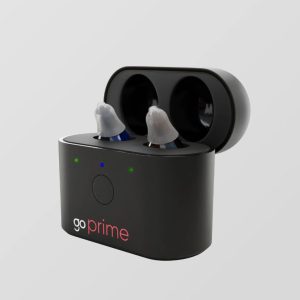

Key product features
What you should know
- When testing Go Prime hearing aids, one tester noted they were more noticeable and less comfortable than Go Ultra. Our tester said the devices weren’t necessarily uncomfortable, but they could feel them in their ears.
- When talking on your cellphone, the hearing aids will hit the phone, which may be uncomfortable or annoying.
- Like Go Ultra, the Go Prime hearing aids remained in our tester’s ears while doing day-to-day activities such as head-banging, dancing, and light jogging.
Recommended for:
- People looking for inexpensive OTC hearing aids without many advanced features.
Go Hearing vs. competitors
Go Hearing offers some of the lowest prices for OTC hearing aids, but some users may be interested in the additional features and technology competitors offer.
Jabra Enhance Select hearing aids are nearly $1,300 more than Go Ultra. These advanced OTC hearing aids feature an app, four pre-programmed modes, binaural directionality, and advanced algorithms for a more immersive, natural hearing experience. Users choosing the premium package ($1,995 per pair) receive unlimited audiologist support for three years, a three-year warranty, and custom-programmed hearing aids.
Related post: Jabra hearing aids review
Bose powers Lexi B2 Plus hearing aids, so users can expect high-quality sound and feedback reduction. The receiver-in-canal (RIC) hearing aids include an app for easy sound and volume adjustments, four environment presents, 10 recommended listening modes, and Bluetooth streaming. We’re also impressed the hearing aids include free lifetime audiology support.
Related post: Lexie hearing aids review
MDHearing Volt hearing aids are similar to Go Ultra. They have four preset listening programs, are behind-the-ear (BTE), and don’t have an app. At $397 per pair, they’re nearly $100 less than Go Ultra.
Related post: MDHearing hearing aids review
At $2,950 per pair, Eargo 7 hearing aids are nearly $2,000 more than Go Ultra and most OTC models. The completely-in-canal (CIC) devices offer four listening programs, noise reduction, and automatic sound adjustment powered by artificial intelligence. Eargo 7 doesn’t support music or audio streaming—Bluetooth connection is only available with the Eargo app to control sound settings.
Related post: Eargo hearing aids review

|
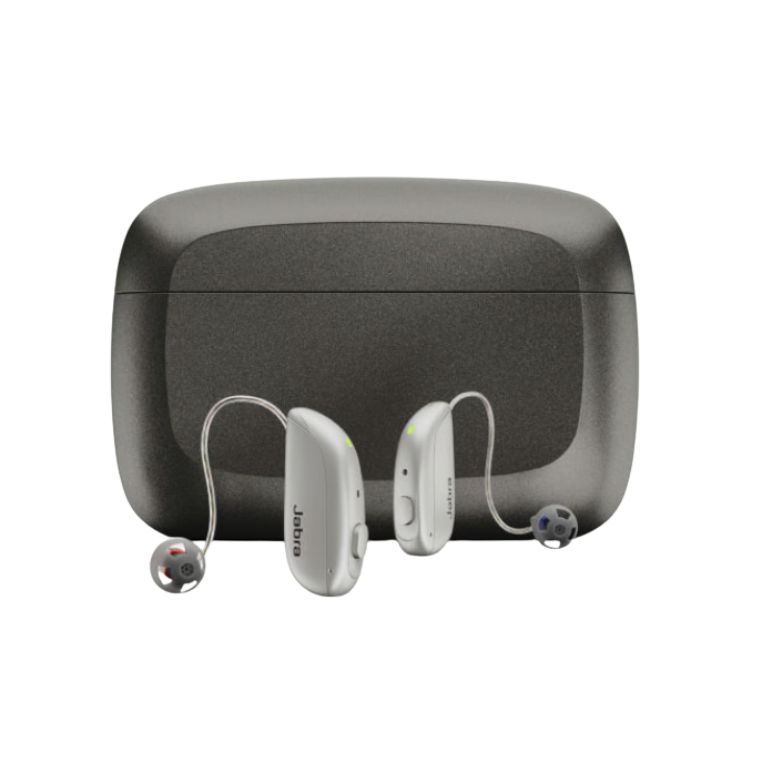
|

|
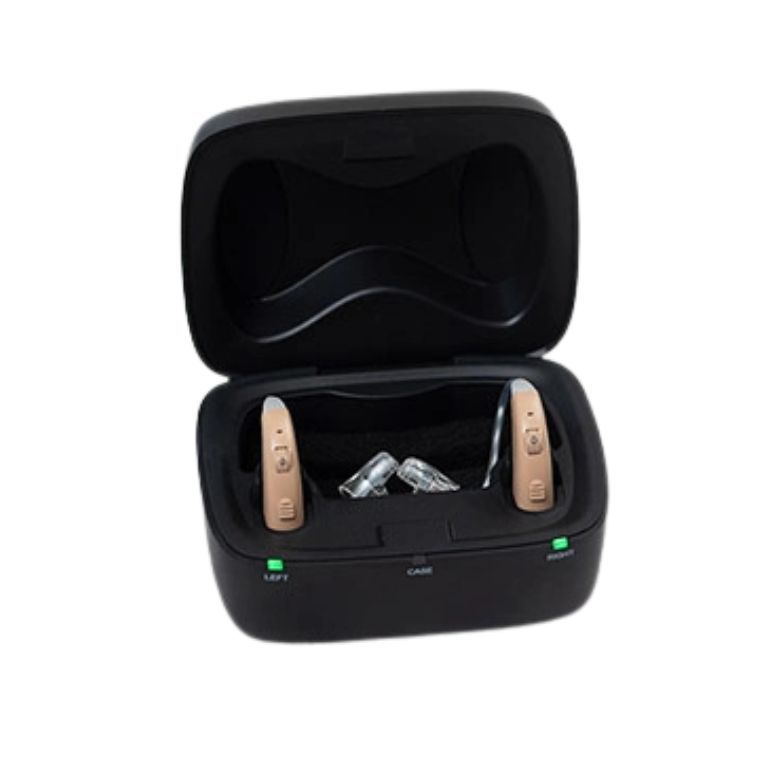
|
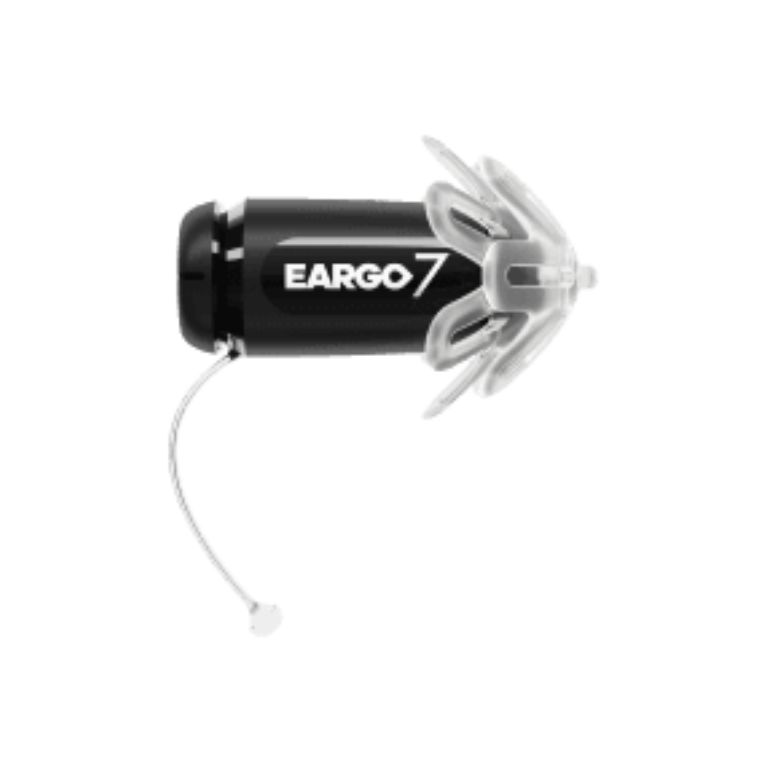
|
|
| Go Hearing Go Ultra | Jabra Enhance Select 500 | Lexie B2 Plus | MDHearing Volt | Eargo 7 | |
| Rating | |||||
| Price | $499 | $1,795–$1,995 | $999 | $397 | $2,950 |
| Type (OTC or prescription) | OTC | OTC | OTC | OTC | OTC |
| Style | Behind-the-ear (BTE) | Receiver-in-canal (RIC) | RIC | BTE | Completely-in-canal (CIC) |
| Battery type | Rechargeable | Rechargeable | Rechargeable | Rechargeable | Rechargeable |
| Battery life | Up to 20 hours | Up to 24 hours | Up to 18 hours | Up to 20 hours | Up to 16 hours |
| Bluetooth | Yes | Yes, advanced | Yes | No | Only for the app, no streaming |
FAQs
How much do Go Hearing hearing aids cost?
Go Ultra hearing aids cost $499 per pair, and Go Prime hearing aids cost $299 per pair.
Does CVS sell hearing aids?
Do cheap hearing aids really work?
High-quality over-the-counter (OTC) hearing aids can be effective for mild to moderate hearing loss. Go Hearing offers hearing aids for $299–$499 per pair, while the average cost of OTC hearing aids is less than $200 to $3,000 per pair. After thoroughly testing Go Hearing Ultra and Prime hearing aids, our testers were pleased with the quality and performance, especially at a reasonable price.
Are Go Hearing hearing aids covered by insurance?
Generally, hearing aids aren’t covered by insurance. Medicare doesn’t cover hearing aids (12), but some private insurance plans offer coverage for hearing aids. Certain states require insurance to cover hearing aids for children, while others require coverage for adults and children. (13) Check coverage details with your insurance provider.
Our experts
Dr. Aneesha Dhargalkar
Dr. Aneesha Dhargalkar is a board-certified emergency medicine physician currently practicing in West Chester, PA. She graduated cum laude from John Hopkins University in 2002 and from Jefferson Medical College in 2006. After this, Dr. Dhargalkar attended and completed a three-year residency program in emergency medicine at Temple University Health System. Dr. Dhargalkar is the director of her hospital’s wellness provider program and sits on the executive board of both the Chester County Suicide Prevention Task Force and the Unionville Chadds Ford School District Education Foundation.
Krista Manning
Krista Manning is an accomplished medical copy editor and fact-checker who stands out in the pharmaceutical, health, and wellness domains. With a meticulous eye for detail and a command of medical language, Krista ensures the accuracy and clarity of content. Beyond her professional expertise, Krista is an advocate for mental health awareness. Recognizing the crucial intersection of psychological and physical well-being, she actively contributes to projects that promote mental health awareness within the healthcare narrative. Krista’s commitment extends beyond the pages she edits, emphasizing the holistic nature of health communication.

Emily Breaux
Fortune Recommends Writer
About Author
Emily is a health and wellness writer with a background in marketing and secondary education. She enjoys covering wellness topics that help readers navigate aging, caregiving, sleep, and nutritional health. Emily specializes in medical alert systems and has hand-tested more than 20 devices. Her work has been featured in National Council on Aging, HelpGuide, AgingInPlace.org, and MarketWatch.
Emily is based in New Orleans and enjoys neighborhood walks, practicing yoga, performing in local theatre productions, and finding her next read at the library.
Sources
- Depression and Hearing Loss. American Academy of Audiology. https://www.audiology.org/consumers-and-patients/hearing-and-balance/depression-and-hearing-loss/
- Powell DS, Oh ES, Reed NS, Lin FR, Deal JA. Hearing Loss and Cognition: What We Know and Where We Need to Go. Front Aging Neurosci. 2022;13: 769405. Published 2022 Feb 28. doi:10.3389/fnagi.2021.769405. https://www.ncbi.nlm.nih.gov/pmc/articles/PMC8920093/
- OTC Hearing Aids: What You Should Know. U.S. Food and Drug Administration. Updated May 3, 2023. https://www.fda.gov/medical-devices/hearing-aids/otc-hearing-aids-what-you-should-know
- The House Institute. Why Hearing Health. https://hifla.org/about/why-hearing-health
- The Johns Hopkins University. The Hidden Risks of Hearing Loss https://www.hopkinsmedicine.org/health/wellness-and-prevention/the-hidden-risks-of-hearing-loss
- Go Hearing. Behind-the-ear vs. In-the-ear Hearing Aids. Accessed October 22, 2024.
- Wang, H., Tang, D., Wu, Y., Zhou, L., Sun, S. The state of the art of sound therapy for subjective tinnitus in adults. Therapeutic Advances in Chronic Disease. 2020; 11: 2040622320956426. https://www.ncbi.nlm.nih.gov/pmc/articles/PMC7493236/
- Go Hearing. Terms and Conditions. Accessed October 23, 2024.
- Go Hearing. Return Policy. Accessed October 23, 2024.
- Healthcare.gov. Using a Flexible Spending Account (FSA). Accessed October 23, 2024.
- Healthcare.gov. Health Savings Account (HSA). Accessed October 24, 2024.
- Medicare.gov. Hearing Aids. Accessed October 22, 2024.
- American Speech-Language-Hearing Association. State Insurance Mandates for Hearing Aids. Accessed October 22, 2024.
